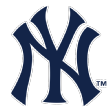Baseball is an era of extremes, from strikeouts to home runs and perhaps especially with team construction, now that there is a growing number of super teams and tanking teams, with fewer clubs between.
The extremes extend to individual components within a team. Major league clubs have built super bullpens and record-setting rotations, historically productive lineups and top-tier defenses. When elite units collide, such as with the Dodgers' rotation and bullpen facing the Astros' lineup last October, some remarkable baseball can occur.
Positional strengths matter a great deal in team vs. team matchups, in which an advantage can prove pivotal. Strengths are also luxuries in team construction, allowing resources to be allocated elsewhere -- or a surplus traded from -- to fill in weaker areas. Certain strengths also mean more in the postseason, when the game changes due to a heightened urgency and extra days off. To understand which teams might have competitive advantages in 2018, we have to go beyond WAR totals. Which teams have the strongest strengths to warp games in their favor in 2018?
 The New York Yankees' bullpen
The New York Yankees' bullpen
Yankees general manager Brian Cashman has been adept at getting ahead of the game's trends, from building a powerful lineup to putting together what might be the most dominant bullpen the game has ever known. In major league history, only the 2003 Dodgers (with 9.6 fWAR) produced more bullpen WAR than the Yankees' 9.2 last season.
The Yankees featured four relief pitchers -- Dellin Betances, Chad Green, Tommy Kahnle and David Robertson -- who exceeded a 37 percent strikeout rate. No other team had more than one pitcher reach that mark last season. The Yankees' bullpen set an MLB record by striking out 29.1 percent of batters. Early this season, Yankees relievers are striking out 13.4 batters per nine innings (35.4 percent); no other team is within two strikeouts per nine. The Yankees added Kahnle and Robertson at the deadline last year. Then there's closer Aroldis Chapman, who looked more like his dominant self down the stretch and earlier this season after an uneven 2017. With a full season of Green and Robertson, Chapman returning to his usual self and Betances potentially ironing out his command issues, there is plenty of upside in what was already the game's best relief crew.
Then consider how dominant the Yankees' bullpen projects to be in 2018, according to FanGraphs' preseason forecasts. The Yankees project to produce 7.1 bullpen WAR, but projection systems are conservative, and the next closest team is the Astros (5.5) followed by the Indians (4.5). Another way to consider this dominance is by Z-score, or how many standard deviations the Yankees are from the mean. The Yankees' bullpen Z-score for WAR is 3.1. Only Angels' center fielders (also known as Mike Trout, 3.7 Z-score) and Astros' second basemen (Jose Altuve, with a 3.0 Z-score) had Z-scores of three or greater amongst their positional groups, according to FanGraphs' Jeff Sullivan.
That means the Yankees' bullpen is in a tier by itself, and that could mean big things come October. Relievers accounted for an MLB-record 38.1 percent of innings last season, and that total jumped to 46.4 percent in the postseason.
 The Cleveland Indians' rotation
The Cleveland Indians' rotation
The Indians' rotation is coming off a historic season. It became the first starting rotation to strike out more than 10 batters per nine innings (10.8), and the starters produced 23.1 WAR as a group, which tied the 1969 Cubs for 14th-most in major league history. That's 5 WAR better than the No. 2 rotation last season, the Diamondbacks'. The Indians' rotation returns intact.
Led by Cy Young winner Corey Kluber, the Indians' staff relied more and more upon elite breaking pitches and less upon the fastball. The Indians (48.3 percent), like the Astros (49.6 percent) and Yankees (44.6 percent), threw fastballs less than 50 percent of the time, posting three of the lowest fastball rates in baseball. All three are predicted to win their divisions. According to FanGraphs' linear weights, the Indians were the top slider-throwing team of all time. That one pitch produced 65 runs above average. Kluber's slider was rated as the best pitch in all of baseball. Perhaps the Indians will rely upon the pitch even more.
Although there a number of other excellent rotations (See: Astros, Nationals, Dodgers, Mets, Red Sox), the Indians are positioned to be the top staff in the game again, and they have yet even more upside possible.
Trevor Bauer might be ready to take his game to another level. After bringing an MLB-worst 6.00 ERA into his May 30 start last season, Bauer began throwing his best pitch, his curveball, more frequently and became one of the most effective starters in the second half, ranking 18th among starters in fWAR. He began to throw a slider late in the season and spent the winter perfecting it. Bauer threw his new slider 11 times Sunday against the Royals, and he got three swing-and-misses while allowing just one run in eight innings.
Mike Clevinger established himself as more than rotation depth last season (2.1 fWAR), and he added a curveball to make him another above-average strikeout arm (10.1 K/9). Add his upside and Bauer's to Kluber and Carlos Carrasco, as talented a one-two punch as exists in the game. And let's not forget Danny Salazar who, when healthy, has top-of-the-rotation upside.
 The Los Angeles Dodgers' catching combo
The Los Angeles Dodgers' catching combo
Catchers are a different animal. They require more rest than players at most positions, and their defensive value is considerable even before considering the intangibles of working with pitchers, game planning and game calling. There is a strong argument to be made that catcher is the most important defensive position on the field. Any offensive contribution is largely viewed as a plus at a position that collectively produced a wRC+ of 89 last season, or 11 percent below average on offense.
Fielding one quality catcher is tough, let alone having depth, which makes the Dodgers unique. The Dodgers essentially enjoy the equivalent of a hidden Mike Trout at the catcher position. Yasmani Grandal and Austin Barnes are not only well above average offensive performers -- combining for a wRC+ of 115 last season, good for third among all teams' catchers -- but they rated as elite pitch framers, according to Baseball Prospectus' framing metrics. They helped the Dodgers rank No. 1 in framing runs (plus-34). Overall, those two were worth a combined nine WAR last season, according to BP's BWARP, which includes framing value. Barnes began to take the lion's share of playing time late in the season and into the postseason, becoming the first catcher since Russell Martin in 2014 to post a .400 on-base mark (.408) and tying Joey Votto for the best two-strike wOBA (.359) in the game.
Grandal has been named as the primary catcher this spring and is working on improving his launch angle to tap into his plus power. But however they split the workload, these two will be the best catching tandem in the game.
 The Yankees' power at the plate
The Yankees' power at the plate
The Yankees could already mash with Aaron Judge and Gary Sanchez, and for good measure, they added NL MVP Giancarlo Stanton in the offseason. Stanton hit 59 homers last season and goes from a home park in Miami that had a right-handed home run park factor of 80 (100 is average) to one in New York with a 124 mark. Judge, Sanchez and Stanton are three of the most powerful players in the game as is, and they play in one of the most favorable home run ballparks in the majors. If Greg Bird can return to health, the Yankees will have another masher. Didi Gregorius has already shown his power spike is legit at shortstop, while Neil Walker gives the team insurance and more left-handed balance.
The Yankees led baseball with 241 home runs last season and are a threat to break the single-season team record set by the 1997 Mariners (264). Before Opening Day, FanGraphs projected the Yankees to smash 279 home runs. Although it might not mean quite as much if the sport continues to hit homers at a record rate, it's still significant. Home runs are particularly meaningful in the postseason, when there are generally fewer mistake pitches to hit and a home run can swing win probability in a more meaningful way.
 The Houston Astros' on-base skills
The Houston Astros' on-base skills
The Astros were a historically great offense last season. How great? They trailed only the 1927, 1930 and 1931 Yankees in wRC+ (121).
To highlight the skills of the Astros, look back on World Series Game 5, a game started by Clayton Kershaw and finished by Kenley Jansen. The Astros faced 194 pitches in that game and swung and missed just 13 times. No one has blended power and contact better than the Astros.
While most teams are making less contact, the Astros actually improved last season. They trimmed their strikeout rate from 23.4 percent in 2016 to 17.3 percent last season, the best rate of making contact in baseball. The next-best strikeout reduction this season was that of the Indians (1.7 percentage points). The Astros improved from 28th in zone contact in 2016 (83.6 percent) to first last season (88.8 percent).
The Astros are a historical offensive outlier. It's tied to not just their hitting for power but also their ability to make contact in a high-strikeout era without sacrificing power.
 The Los Angeles Angels' infield defense
The Los Angeles Angels' infield defense
The Angels were already one of the better defensive teams last season, finishing second to the Red Sox in FanGraphs' defensive metric (31.7 runs saved above average) and sixth in defensive runs saved (plus-30). But that was almost solely due to the game's premier defender in Andrelton Simmons, who posted a plus-32 DRS at shortstop last season.
In the offseason, the Angels aggressively bolstered their defense with the signing of shortstop Zack Cozart, now playing third base, and they added Ian Kinsler at second. The Angels totaled minus-12 DRS at second base last season and minus-1 DRS at third. Although we cannot be certain how well Cozart will play third, he should be above-average as he moves down the defensive spectrum. Cozart has recorded a plus-45.9 UZR and plus-56 DRS over the course of his career at shortstop; Kinsler has recorded plus-40.4 and plus-108, respectively, at second base.
If the Angels secure a playoff berth, it might not be tied only to Mike Trout being Mike Trout and Shohei Ohtani dominating as no player since Babe Ruth has. It will also be because the Angels became the best defensive team in baseball, thanks in part to what might be the game's best infield defense. Ten games into the season, the Angels rank fourth in baseball in defensive runs saved.
